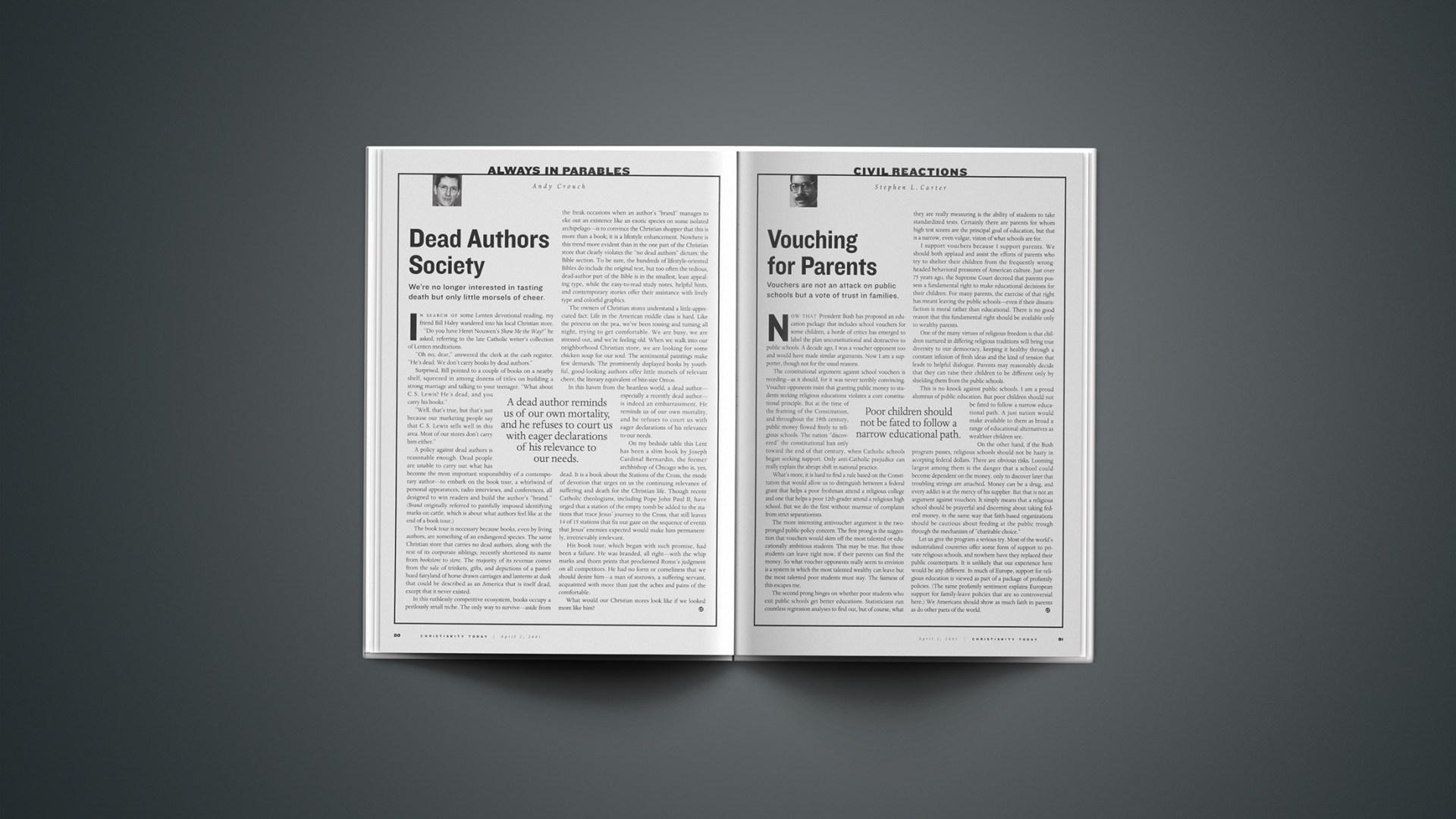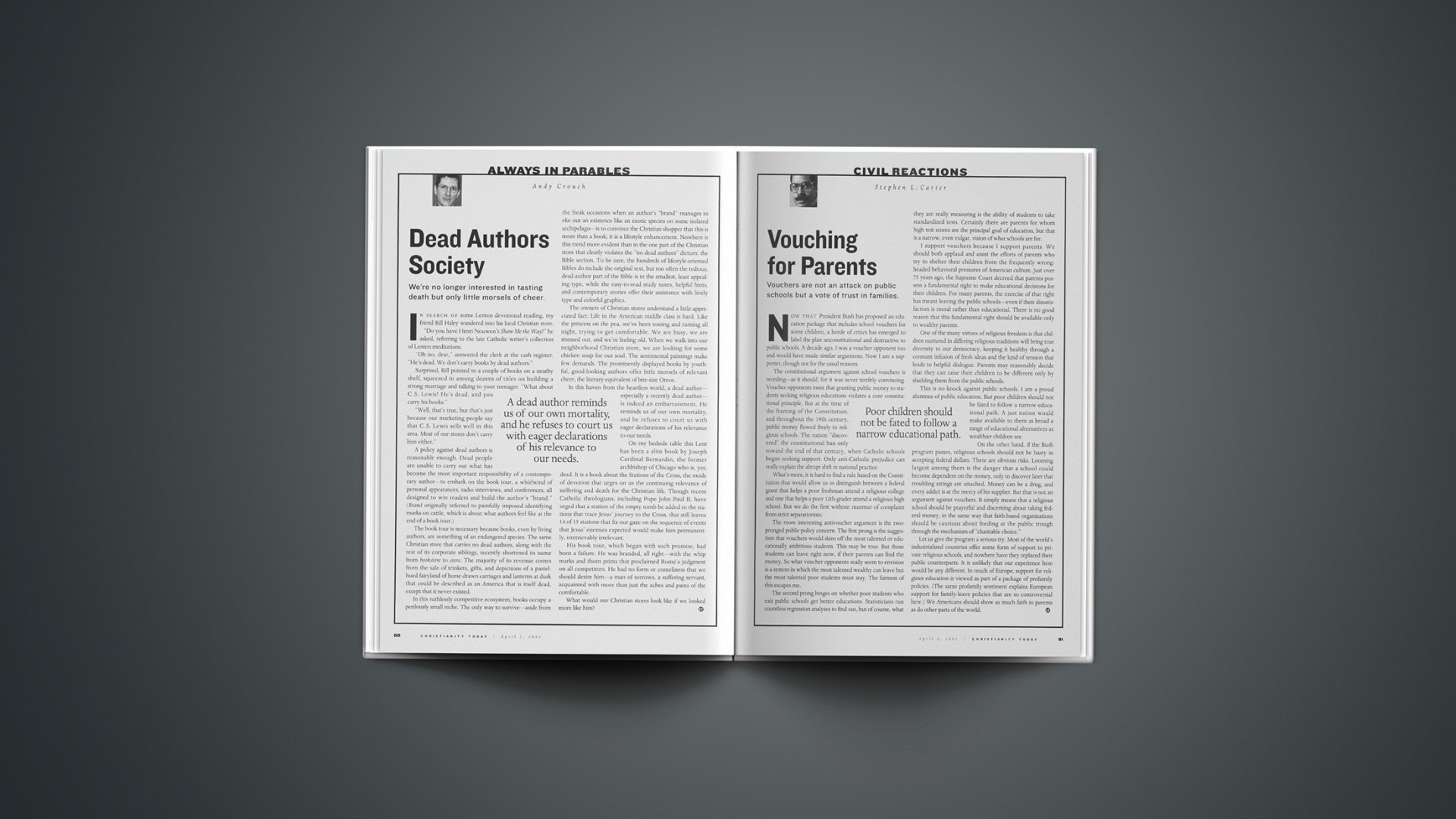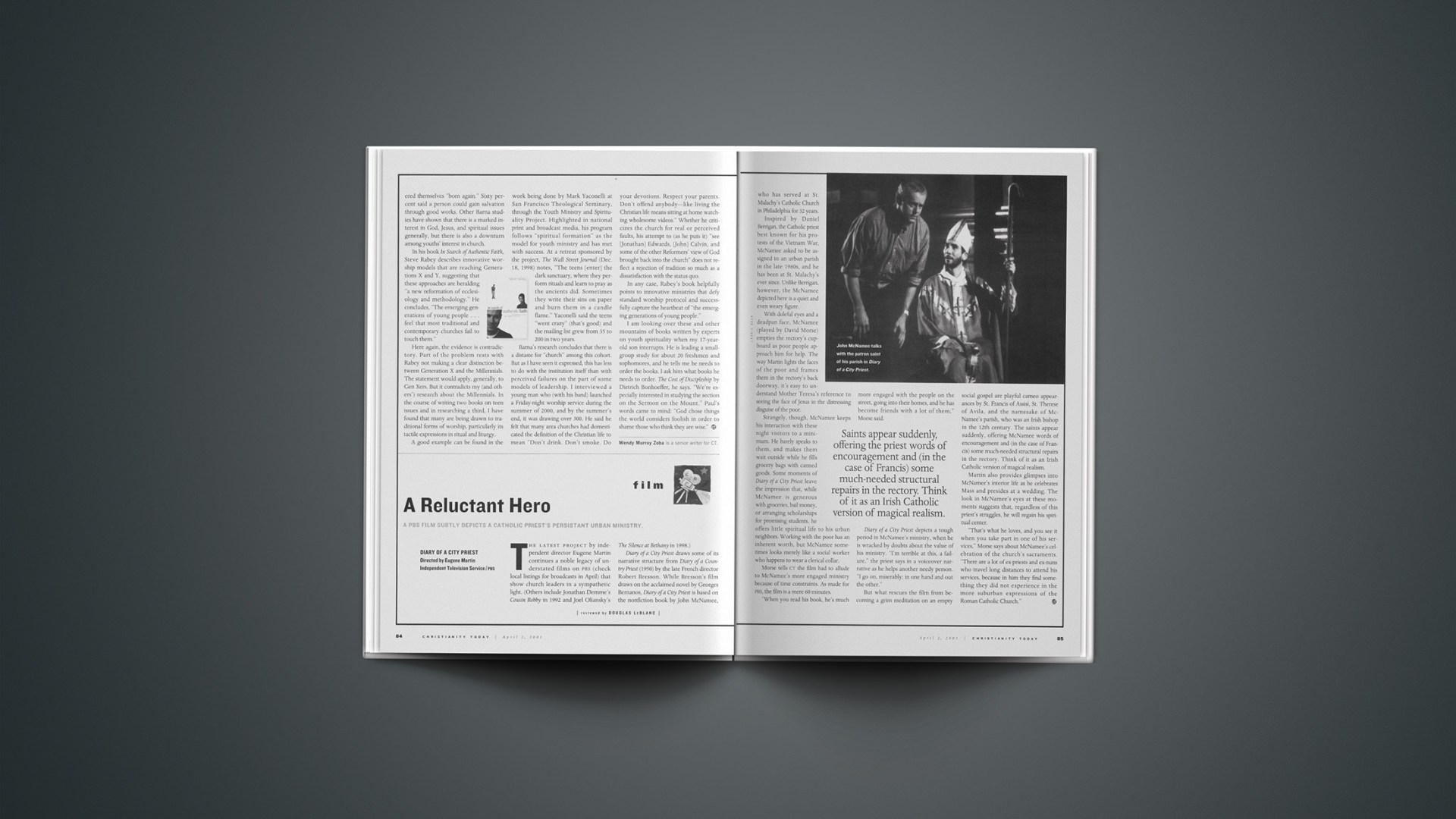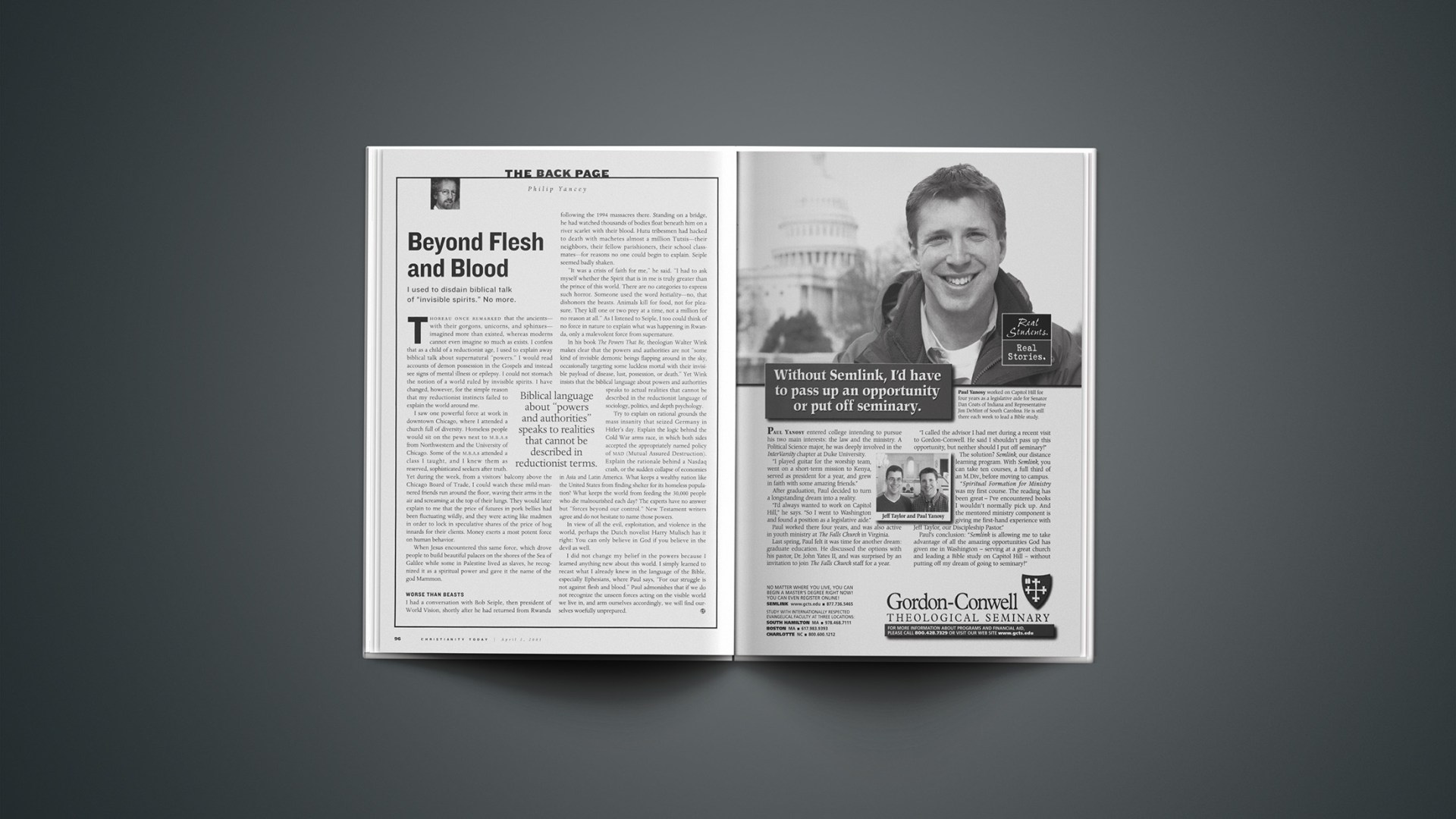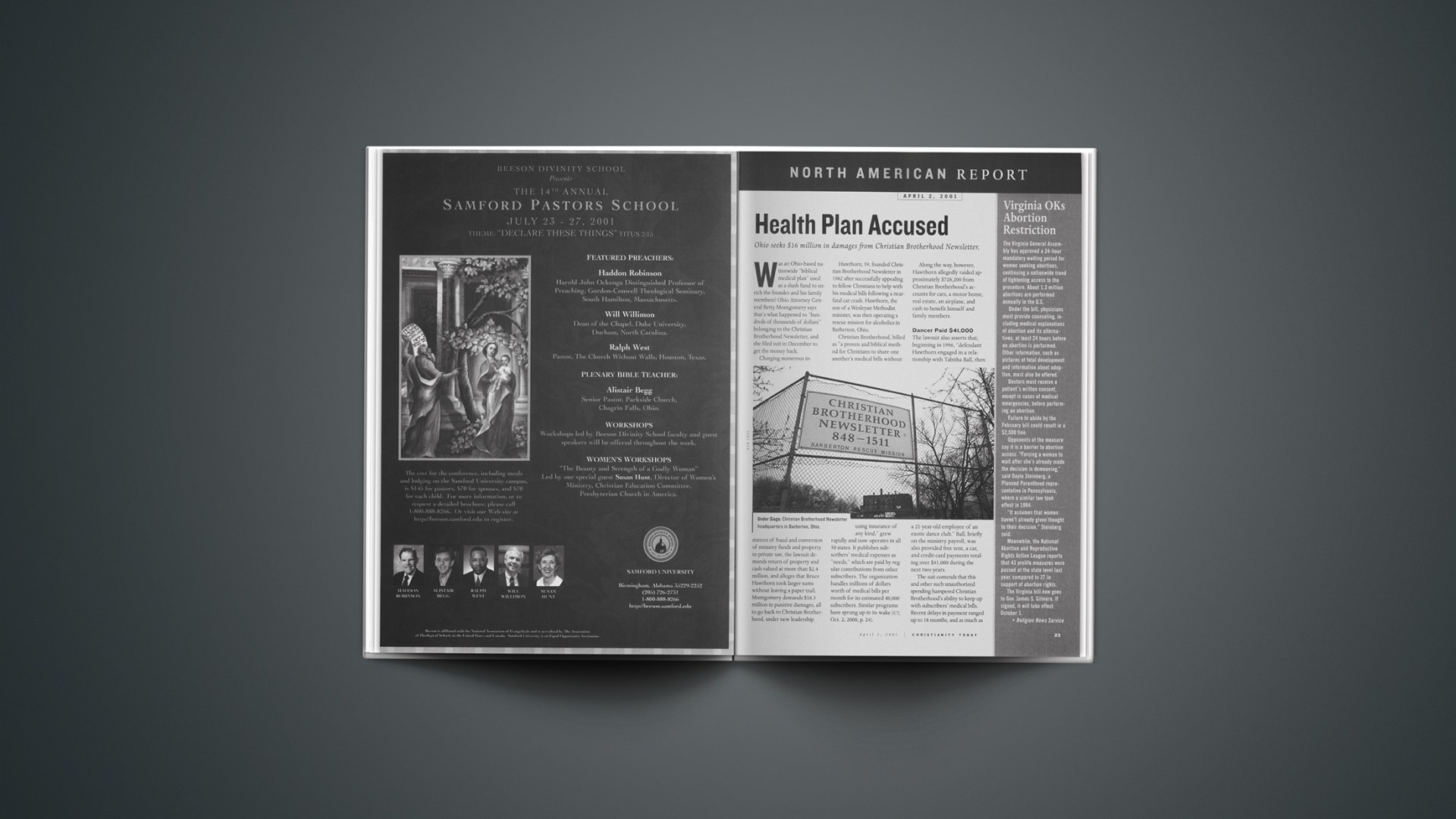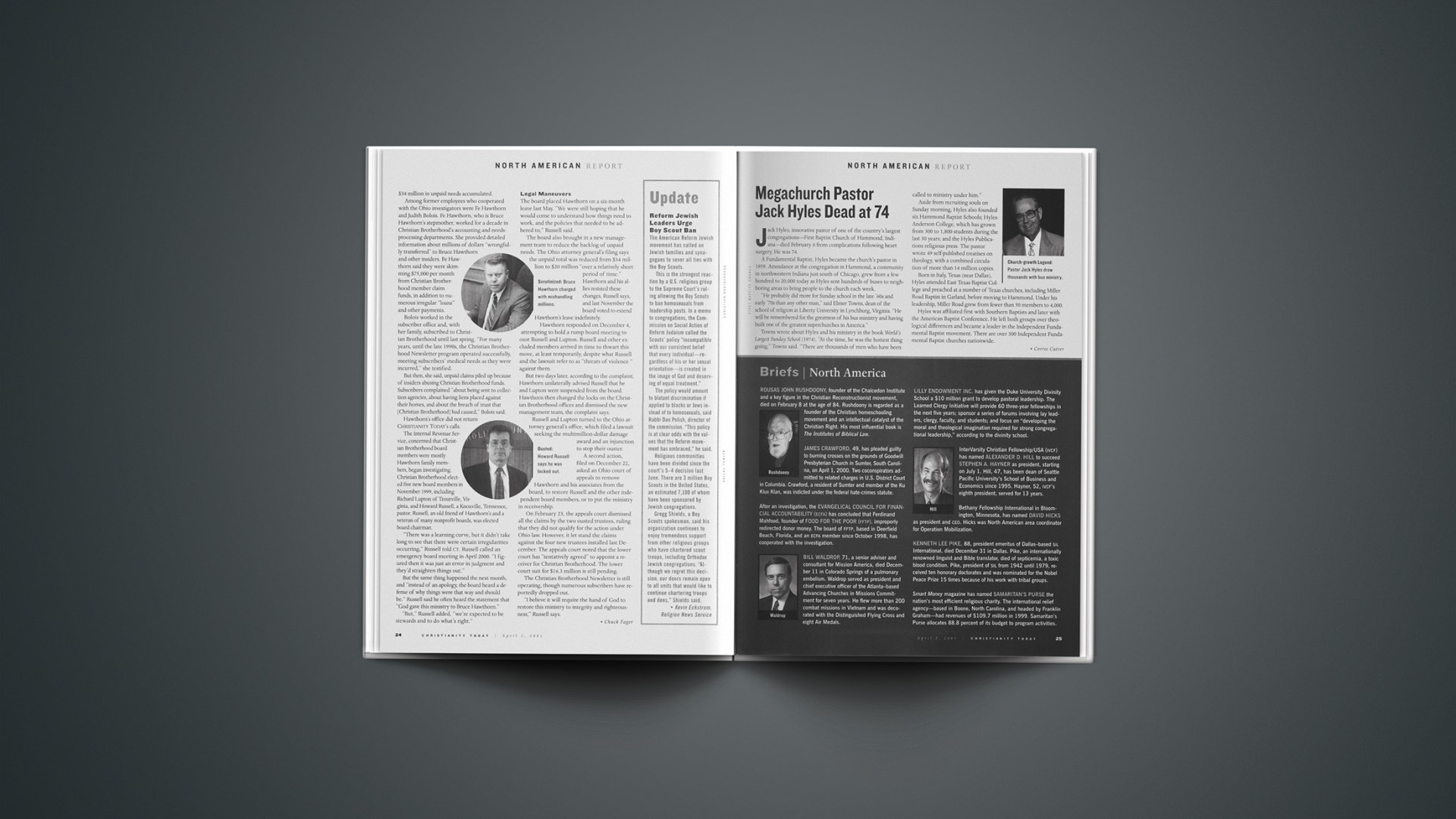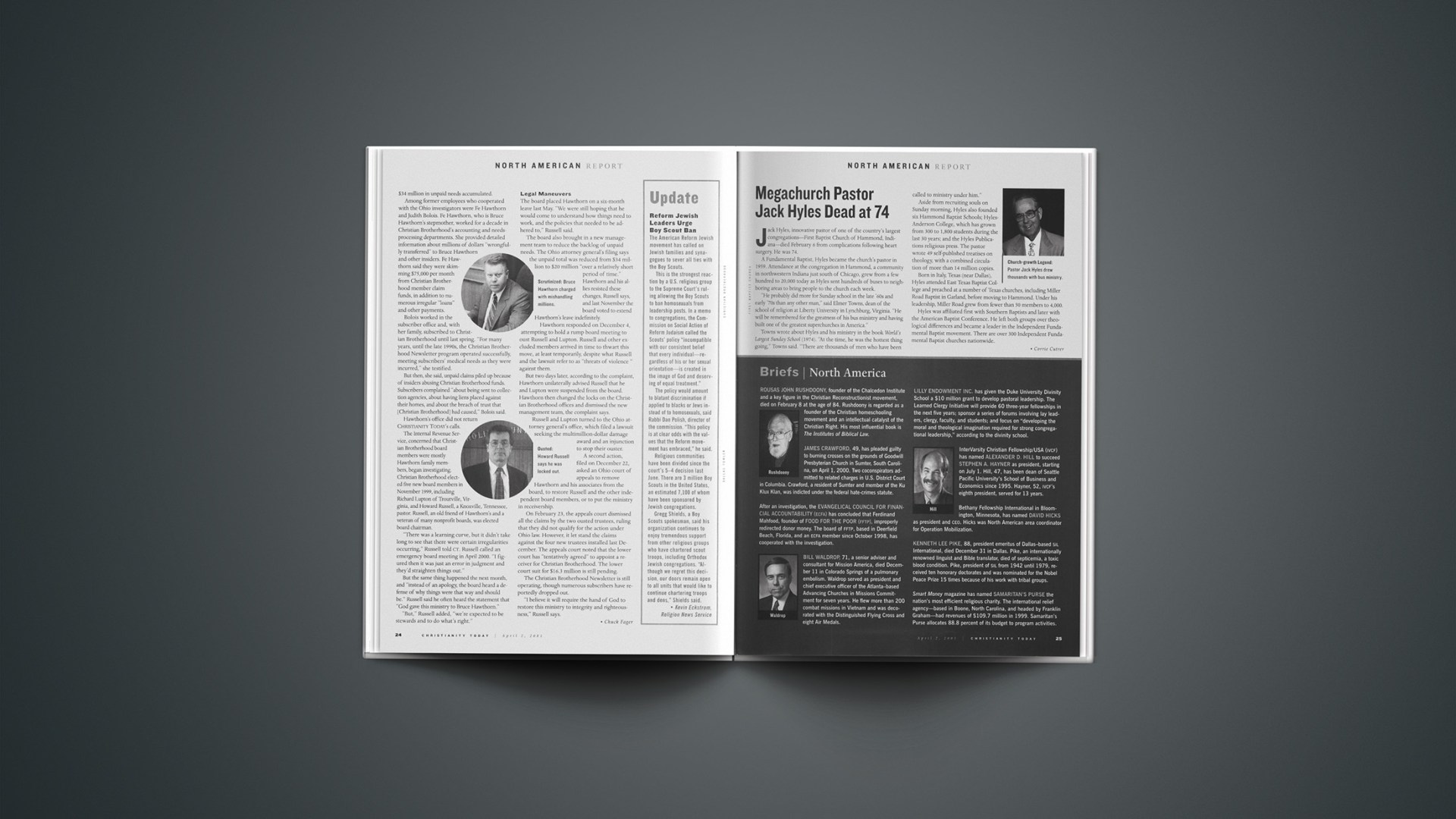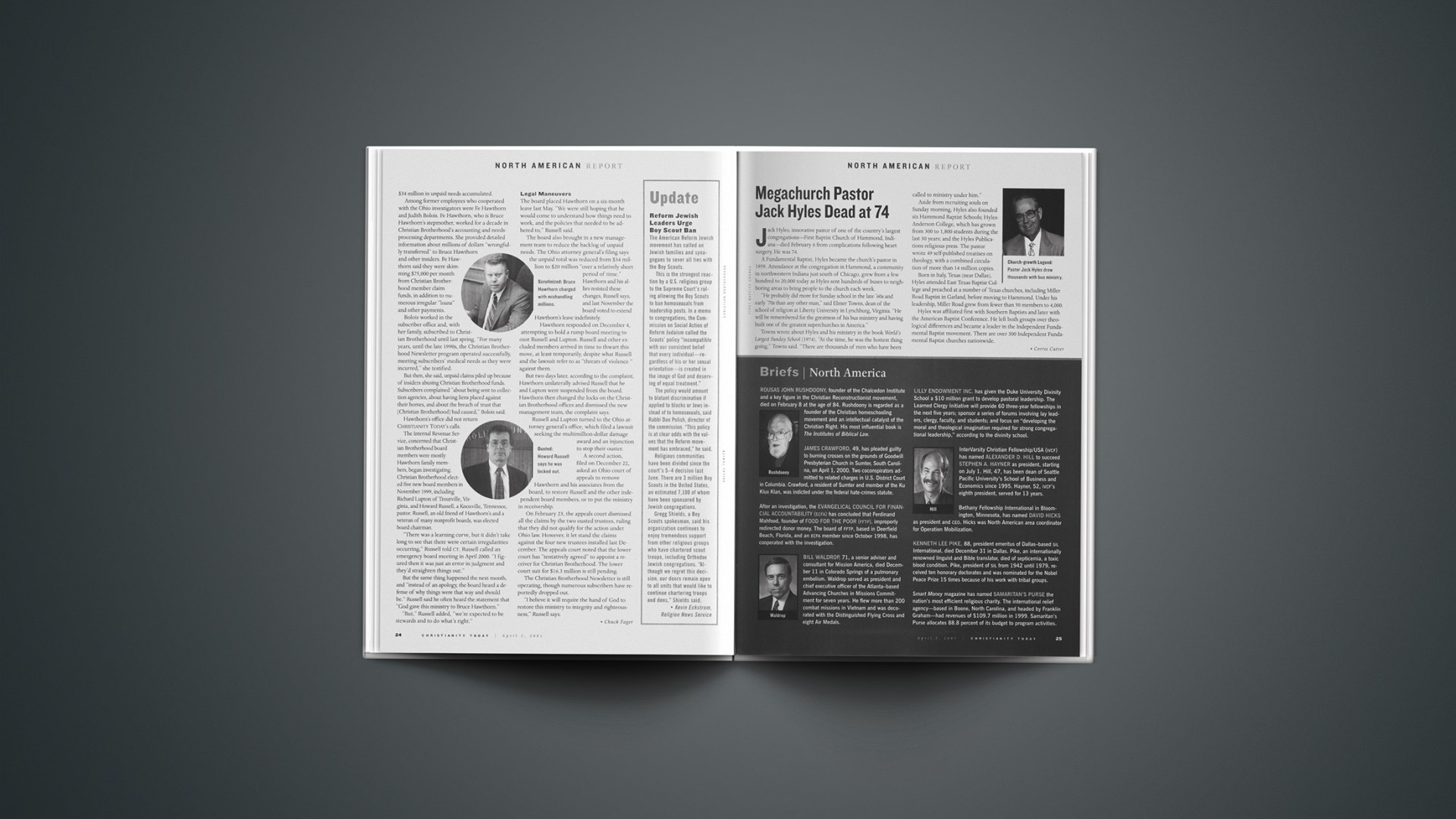In search of some Lenten devotional reading, my friend Bill Haley wandered into his local Christian store.
"Do you have Henri Nouwen's Show Me the Way?" he asked, referring to the late Catholic writer's collection of Lenten meditations.
"Oh no, dear," answered the clerk at the cash register. "He's dead. We don't carry books by dead authors."
Surprised, Bill pointed to a couple of books on a nearby shelf, squeezed in among dozens of titles on building a strong marriage and talking to your teenager. "What about C. S. Lewis? He's dead, and you carry his books."
"Well, that's true, but that's just because our marketing people say that C. S. Lewis sells well in this area. Most of our stores don't carry him either."
A policy against dead authors is reasonable enough. Dead people are unable to carry out what has become the most important responsibility of a contemporary author—to embark on the book tour, a whirlwind of personal appearances, radio interviews, and conferences, all designed to win readers and build the author's "brand." (Brand originally referred to painfully imposed identifying marks on cattle, which is about what authors feel like at the end of a book tour.)
The book tour is necessary because books, even by living authors, are something of an endangered species. The same Christian store that carries no dead authors, along with the rest of its corporate siblings, recently shortened its name from bookstore to store. The majority of its revenue comes from the sale of trinkets, gifts, and depictions of a pastel-hued fairyland of horse-drawn carriages and lanterns at dusk that could be described as an America that is itself dead, except that it never existed.
In this ruthlessly competitive ecosystem, books occupy a perilously small niche. The only way to survive—aside from the freak occasions when an author's "brand" manages to eke out an existence like an exotic species on some isolated archipelago—is to convince the Christian shopper that this is more than a book; it is a lifestyle enhancement. Nowhere is this trend more evident than in the one part of the Christian store that clearly violates the "no dead authors" dictum: the Bible section. To be sure, the hundreds of lifestyle-oriented Bibles do include the original text, but too often the tedious, dead-author part of the Bible is in the smallest, least appealing type, while the easy-to-read study notes, helpful hints, and contemporary stories offer their assistance with lively type and colorful graphics.
The owners of Christian stores understand a little-appreciated fact: Life in the American middle class is hard. Like the princess on the pea, we've been tossing and turning all night, trying to get comfortable. We are busy, we are stressed out, and we're feeling old. When we walk into our neighborhood Christian store, we are looking for some chicken soup for our soul. The sentimental paintings make few demands. The prominently displayed books by youthful, good-looking authors offer little morsels of relevant cheer, the literary equivalent of bite-size Oreos.
In this haven from the heartless world, a dead author—especially a recently dead author—is indeed an embarrassment. He reminds us of our own mortality, and he refuses to court us with eager declarations of his relevance to our needs.
On my bedside table this Lent has been a slim book by Joseph Cardinal Bernardin, the former archbishop of Chicago who is, yes, dead. It is a book about the Stations of the Cross, the mode of devotion that urges on us the continuing relevance of suffering and death for the Christian life. Though recent Catholic theologians, including Pope John Paul II, have urged that a station of the empty tomb be added to the stations that trace Jesus' journey to the Cross, that still leaves 14 of 15 stations that fix our gaze on the sequence of events that Jesus' enemies expected would make him permanently, irretrievably irrelevant.
His book tour, which began with such promise, had been a failure. He was branded, all right—with the whip marks and thorn prints that proclaimed Rome's judgment on all competitors. He had no form or comeliness that we should desire him—a man of sorrows, a suffering servant, acquainted with more than just the aches and pains of the comfortable.
What would our Christian stores look like if we looked more like him?
Copyright © 2001 Christianity Today. Click for reprint information.
Related Elsewhere
Earlier Christianity Today articles that have addressed the state of the Christian book industry include:
Books & Culture Corner: The Culture of Euphemism | A dispatch from the Christian Booksellers Association convention. (July 17, 2000)
Behold the Power of Cheese | A dispatch from the Christian Booksellers Association (July 12, 2000)
Don't Blame the Publishers! | Publishers are not forcing shallow books on an unwilling community. (Feb. 9, 1998)
Articles about books by living and dead authors are available in our books area. Our sister publications Books & Culture and Christian History may also be of interest.
The Christian Booksellers Association Web site mainly offers information about the CBA, though it also has bestseller lists and the text of CBA Marketplace magazine. For more on Christian books, music, and products, see Christian Retailing magazine.
World magazine also criticized "how bumper stickers, stuffed animals, and retail kitsch are squeezing the books out of Christian bookstores" in its July 1, 2000 issue. But it's not as harsh as its July 12, 1997 cover story, "Whatever Happened to Christian Publishing?" (which was itself scrutinized in Books & Culture [print only]).
Modern Reformation also published a critical "dispatch" from CBA in January 1999.
Andy Crouch's past columns for CT are available at our site, as is "The Antimoderns | Six postmodern Christians discuss the possibilities and limits of postmodernism", an article featuring Crouch and some of his colleagues.
Andy Crouch is editor-in-chief of re:generation quarterly. Many of his other writings are available at his and his wife's Web site.

